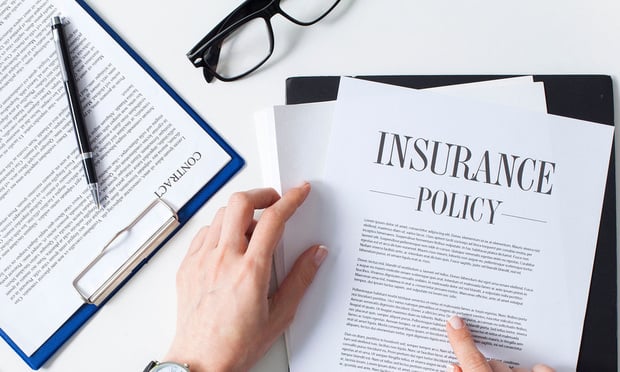Property damage tops claims list
The most devastating losses for small businesses are usually property damage related to wind, water and freezing temperatures, says Jeff Kroeger, head of commercial lines at World Insurance. These claims may include condominium or apartment buildings where running water, broken pipes and leaks can flood multiple floors, leading to extensive losses. The costs of such damages increases exponentially when residential housing is located in the same building as businesses. More severe weather events are fueling claims with annual losses exceeding $100 billion globally from 2019 to 2022 and reaching $118 billion in 2023, according to the National Oceanic and Atmospheric Administration. Property damage from natural disasters can shutter businesses for weeks or months, damaging a company's bottom line. Auto claims are another concern. This is especially true for small businesses with fleet vehicles. Damage from hail and other weather-related events can be significant, and of course business owners also must worry about vehicle accidents. Finally, the cost of repairing vehicles is increasing as advanced technologies installed in newer vehicles tends to be more expensive to repair than an average fender bender, Kroeger says. Next up: Third-party damages, such as slip and falls, and other injuries involving restaurants and food stores are starting to strain the insurance industry, says Kristen Swift with Kaufman Dolowich. Workplace violence is another concern, according to the National Safety Council. The organization reports that 57,610 injuries and 525 deaths occurred from 2021 to 2022, making this the fifth leading cause of death in the workplace. While property damage and liability concerns top the list of types of claims, the need to file a claim or mitigate risk comes down to the kind of business and the product or service it offers. Small businesses with physical locations will have more property and premises liability claims, while digital companies will attract more cyber claims. All businesses, however, are subject to employment practices liability insurance (EPLI) claims and workers' compensation claims. "Our economy right now is experiencing inflation," Swift notes. "There's lower buying power, and that is always a perfect storm to push someone who might not otherwise file a suit or claim into becoming litigious."
Cyberattacks on the rise
"We are seeing an uptick in 'reputational harm' cases… when a small business who stores the consumers' personal and financial data sustains a data breach and confidential information thereafter falls into the wrong hands," says Alex Brown, a partner in the insurance recovery and counseling practice at Lathrop GPM.  Cybercrimes against small businesses amounted to $2.4 billion in losses in 2021, according to the FBI. Cybersecurity training is essential to protect small businesses and consumers. Training videos and protocols can help shore up vulnerabilities by training staff to avoid clicking on suspicious links and pinpoint phishing or smishing attempts. Even employees using their own smart devices who happen to click on a malicious link can expose their employer's data to bad actors, says Jeff Kroeger with World Insurance. Human error is a significant concern for cyber liability claims and not just for small businesses. "Any business operating in a digital space that's collecting confidential or sensitive information is going to be subject to a cyberattack," Swift says.
Cybercrimes against small businesses amounted to $2.4 billion in losses in 2021, according to the FBI. Cybersecurity training is essential to protect small businesses and consumers. Training videos and protocols can help shore up vulnerabilities by training staff to avoid clicking on suspicious links and pinpoint phishing or smishing attempts. Even employees using their own smart devices who happen to click on a malicious link can expose their employer's data to bad actors, says Jeff Kroeger with World Insurance. Human error is a significant concern for cyber liability claims and not just for small businesses. "Any business operating in a digital space that's collecting confidential or sensitive information is going to be subject to a cyberattack," Swift says.
And insurer's role in mitigation
Small business claims mitigation typically starts during the underwriting process when insurance carriers discuss loss history, the biggest risks of exposure, and procedures the policyholder can put in place to avoid future losses, Brown says. Policyholder education is crucial to small business claims mitigation. For instance, insurers can help a manufacturing plant or food producer reduce losses by taking a tour (even a virtual one) to ask questions and provide feedback. "Carriers may require the policyholder to adopt and implement certain processes, such as enhanced data security measures, that can help policyholder[s] avoid losses in the future," Brown says.  Carriers and brokers should engage with policyholders outside of binding coverage to provide them with training on managing internal issues that could lead to claims, such as customer service complaints. Some insurers send out infographics during slow seasons with tips for mitigating property damage and third-party claims, Swift says. "The broker needs to be cognizant as to what those [mitigation measures] are so they can make sure that they're consulting their customer with what they're getting for free," adds Krueger, noting that many of these services are included with insurance coverage but not utilized.
Carriers and brokers should engage with policyholders outside of binding coverage to provide them with training on managing internal issues that could lead to claims, such as customer service complaints. Some insurers send out infographics during slow seasons with tips for mitigating property damage and third-party claims, Swift says. "The broker needs to be cognizant as to what those [mitigation measures] are so they can make sure that they're consulting their customer with what they're getting for free," adds Krueger, noting that many of these services are included with insurance coverage but not utilized.
How businesses can mitigate losses
Most mitigation measures depend on the industry and type of business, but employee training is paramount to avoiding small business insurance claims for most companies. A respectful workplace culture ensures employees feel safe and educated on how to handle issues ranging from electrical hazards to troubled employee interactions. Kroeger recommends small businesses have a written handbook and procedure that holds the team accountable for following the proper steps when an issue arises. "You have to engage with empathy," Swift says. "Listen to the problem that's being presented, take it seriously and investigate as appropriate… really help that employee feel like you're a partner and not the enemy." Property damage mitigation depends on the location and business details. Generally, water damage sensors can prevent or reduce the damage from water leaks and frozen pipes and allow the business owner to act immediately. "Whatever's happening could be ongoing for hours, days or even a week to the point your damage can be minimized to a $50,000 claim," Krueger says. "But if it's not addressed right away, it can stem into hundreds of thousands, if not millions, of dollars' worth of damage." Commercial property owners also should check their roofs, sprinkler systems and electrical systems for issues and institute good housekeeping procedures to keep these systems intact. These small steps can reduce not only property damage claims but also workers' compensation and premises liability claims. If possible, small businesses may want to avoid filing a claim altogether. "Filing a number of smaller claims on your policy term could raise your loss ratio, and you could potentially get non-renewed by that carrier," Kroeger says. He recommends outlining the company's risk tolerance to understand what losses the business can absorb before accessing an insurance policy.
Better understanding coverage
Business owners must understand the details of their insurance policy and avoid assuming coverage exists, Swift says. It's common for policyholders to choose add-on policies, such as cyber, D&O, EPL, or umbrella coverage. The type of add-on depends on their risk profile. "We are seeing a significant rise in third-party claims that are not covered under traditional CGL policies," says Brown, noting that claims for American Disabilities Act violations and wrongful termination or workplace harassment are increasing. "These lawsuits are often brought against the business owners themselves (not just the business), and the cost of legal fees alone can amount to a small fortune. Business owners should seriously consider D&O, EPL, and other lines of coverage to protect their personal assets from such [claims]." Policyholders also must confirm their coverage extends to weaknesses in both physical and digital spaces. For small businesses with investors, D&O coverage is essential to protect against investors who may be unhappy with management decisions.\ Small businesses with vehicle fleets need to protect drivers and fellow employees by conducting thorough criminal background checks and looking into driving records. Food manufacturing businesses need a robust product recall policy, and companies with heavy customer traffic or large gatherings may require active assailant coverage. Cyber policies offer the first line of defense with a hotline that businesses can call immediately to protect their data and finances and help them get back up and running as soon as possible. Kroeger recommends business owners have cyber and excess liability or umbrella coverage to ensure the entirety of their assets are within the limits of coverage. "I would encourage small business owners to maybe have a more thoughtful and more engaged process when it comes to insurance, so it can remain at the back of their mind as a safety net, and when something does come up, they're properly covered," Swift concludes. "Have their broker specify or their agent specify exactly what's in the policy and the language that will ensure there's coverage for that specific niche issue." See also:
Want to continue reading?
Become a Free PropertyCasualty360 Digital Reader
Your access to unlimited PropertyCasualty360 content isn’t changing.
Once you are an ALM digital member, you’ll receive:
- Breaking insurance news and analysis, on-site and via our newsletters and custom alerts
- Weekly Insurance Speak podcast featuring exclusive interviews with industry leaders
- Educational webcasts, white papers, and ebooks from industry thought leaders
- Critical converage of the employee benefits and financial advisory markets on our other ALM sites, BenefitsPRO and ThinkAdvisor
Already have an account? Sign In Now
© 2025 ALM Global, LLC, All Rights Reserved. Request academic re-use from www.copyright.com. All other uses, submit a request to [email protected]. For more information visit Asset & Logo Licensing.








